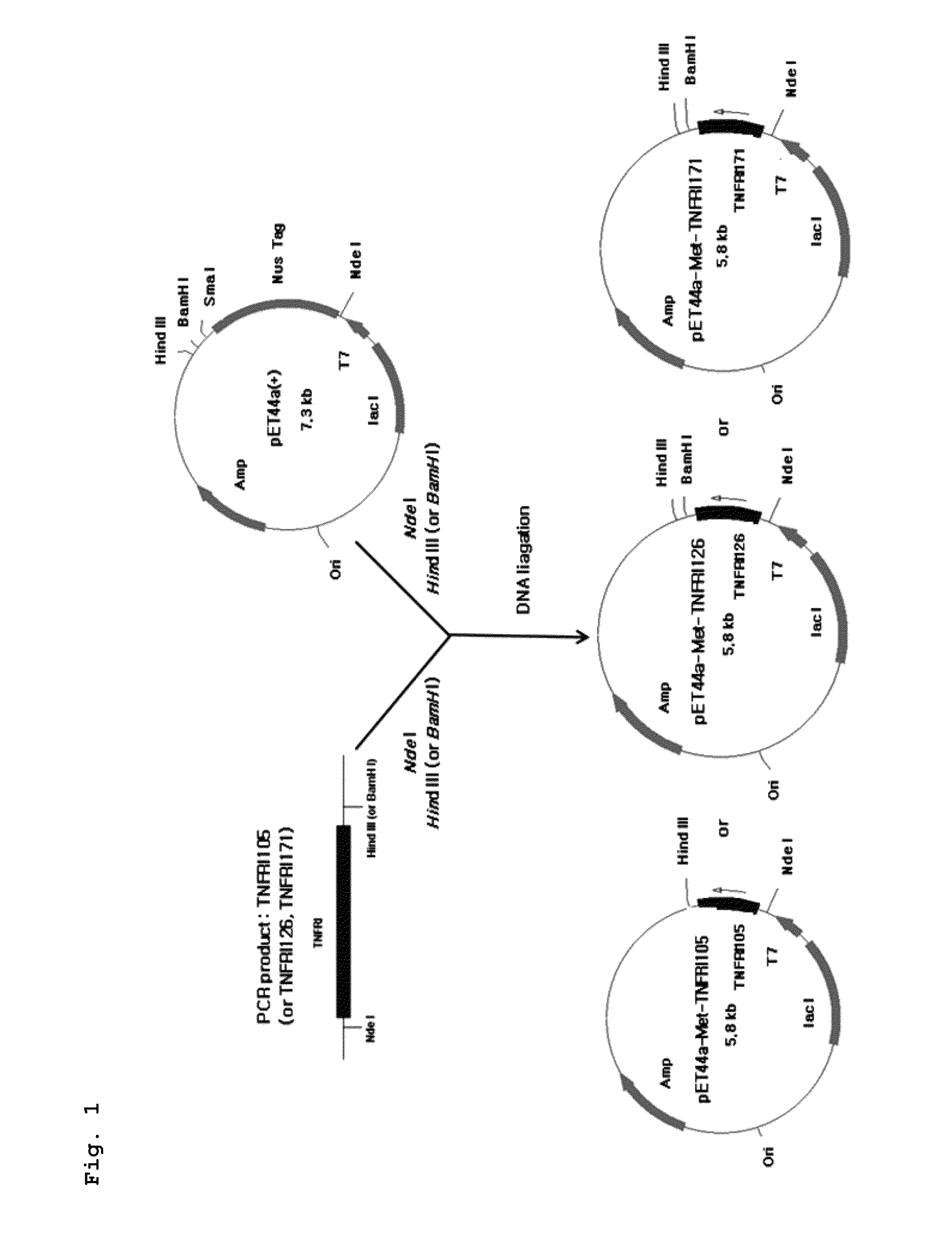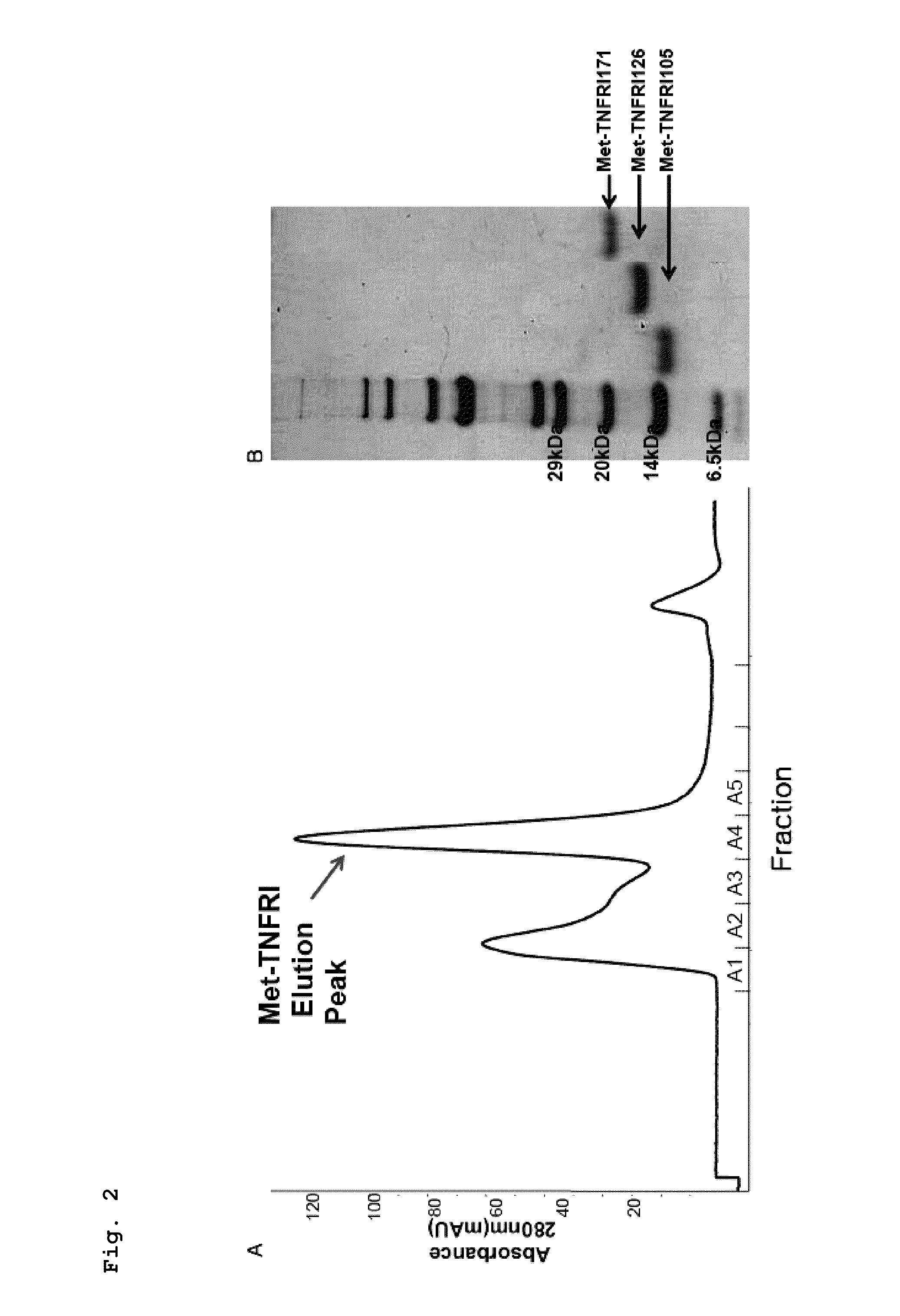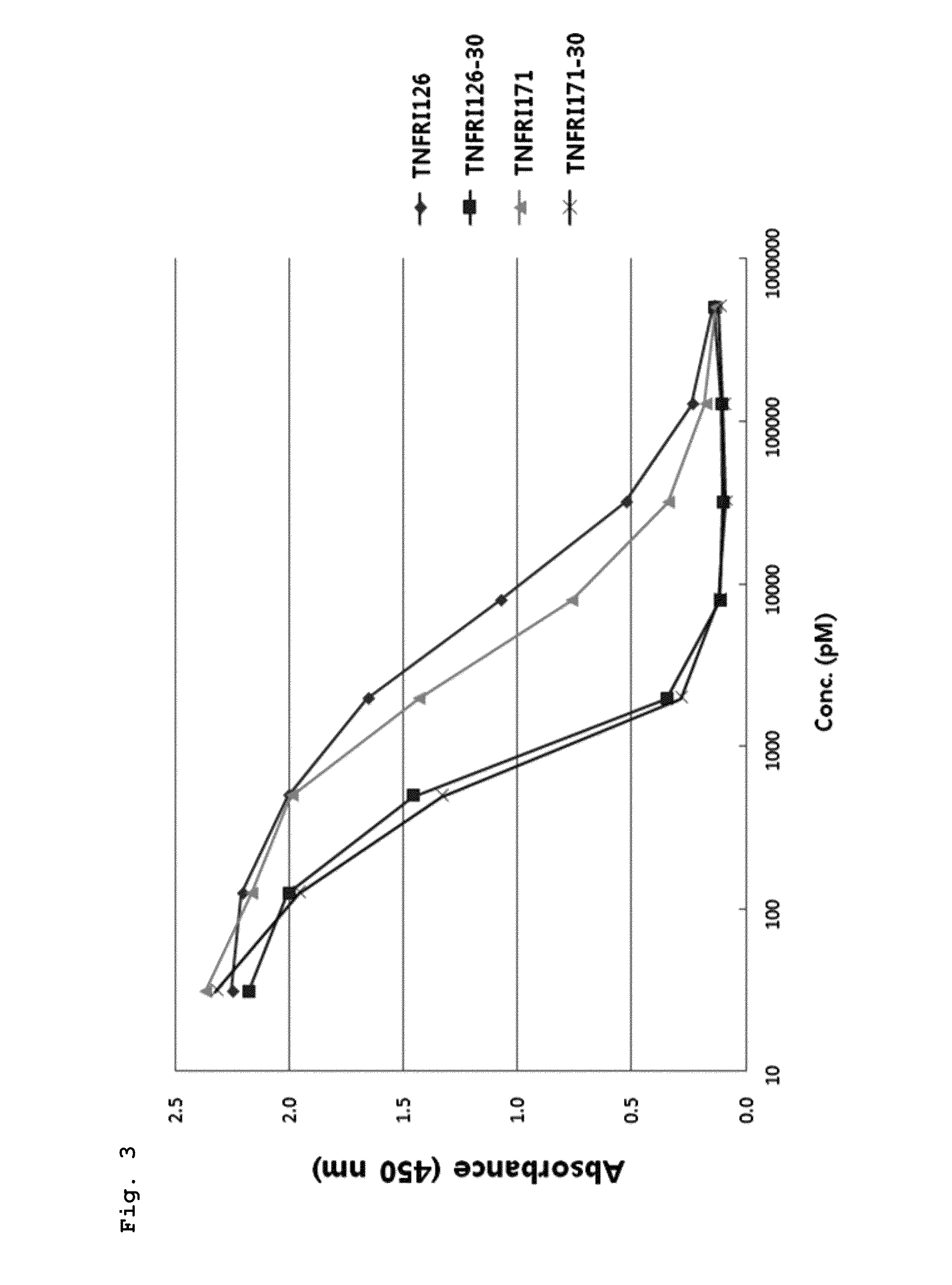Modified human tumor necrosis factor receptor-I polypeptide or fragment thereof, and method for preparing same
a polypeptide technology, applied in the field of modified human tumor necrosis factor receptori polypeptides, can solve the problems of tnf overpowering the ability to self-regulate, and achieve the effect of improving the binding affinity of tnf and effectively inhibiting the activity of tn
- Summary
- Abstract
- Description
- Claims
- Application Information
AI Technical Summary
Benefits of technology
Problems solved by technology
Method used
Image
Examples
preparation example
Preparation of TNFRI Fragments
(1) Preparation of TNFRI Gene Fragment: Preparation of TNFRI171
[0157]It is reported that human TNFRI has 4 extracellular domains, binding of TNFRI to TNF-α is possible even with only three domains of TNFRI (TNFRI126), and more deficiency of the extracellular domains has no effect on the binding of TNFRI to TNF-α. Based on this fact, TNFRI171 having 171 amino acid residues extending from amino acid residue 41 of the human TNFRI polypeptide as set forth in SEQ ID NO: 1, TNFRI126 having 126 amino acid residues extending from amino acid residue 41 of human TNFRI, and TNFRI105 having 105 amino acid residues extending from amino acid residue 41 of human TNFRI were selected as candidate peptides for constructing variants of the present invention. For producing such variants, the nucleotide sequence of TNFRI171 was modified to be convenient for expression in E. coli, using codons optimized in E. coli (SEQ ID NO: 5). This sequence was constructed by PCR-based ge...
example 1
Preparation of TNFRI Fragment Mutant
(1) Design of TNFRI Mutant
[0175]A list of amino acid modifications to be applied to TNFRI105, TNFRI126, and TNFRI171 was shown in Table 1. TNFRI amino acid modification for improving affinity was designed by a method of analyzing sites of amino acids expected to be involved in binding to TNF-α through a structure of TNFRI on a wild-type human TNFRI amino acid sequence disclosed in sequence number 1 and substituting amino acid with other amino acids at each site so as to increase the affinity.
[0176]Mutants in which amino acid modifications shown in No. 1 to 30 of Table 1 were introduced in TNFRI105, TNFRI126, and TNFRI171, respectively, were referred to as TNFRI105-1 to TNFRI105-30 (sequence number 9 to 38), TNFRI126-1 to TNFRI126-30 (sequence number 39 to 68), and TNFRI171-1 to TNFRI171-30 (sequence number 69 to 98).
(2) Preparation of DNA Coding TNFRI Mutants
[0177]In order to prepare a site specific TNFRI mutant, TNFRI mutants were prepared by a s...
experimental example 1
Confirmation of Affinity of Met-TNFRI for the Ligand (TNF-α)
[0189]The Met-TNFRI and the Met-TNFRI mutant that have a purity of 90% or more were quantified using a Bradford method, and the affinity for TNF-α was measured using an ELISA assay.
[0190]100 μL of TNFRI190 (proteins consisting of 190 amino acid residues extending from position 22 to position 211 in the amino acid sequence of TNFRI of a sequence number 1, R&D, Cat. No: 636-R1-025-CF) was loaded at a concentration of 1 μg / ml into 96-well plates and immobilized at 4° C. for 16 hours. Each well was washed three times with 300 μL of washing solution (0.05% Tween-20, PBS, pH 7.4), and 300 μL of a blocking solution (5% skim milk, PBS, pH 7.4) was added thereto to perform a reaction at room temperature for 2 hours. Then, each well was washed as described above. A sample to be analyzed was diluted to concentrations of 500 nM, 125 nM, 31 nM, 7.8 nM, 1.9 nM, 0.48 nM, 0.12 nM, and 0.03 nM in series and loaded in an amount of 100 μL int...
PUM
| Property | Measurement | Unit |
|---|---|---|
| weight | aaaaa | aaaaa |
| weight | aaaaa | aaaaa |
| particle size | aaaaa | aaaaa |
Abstract
Description
Claims
Application Information
 Login to View More
Login to View More - R&D
- Intellectual Property
- Life Sciences
- Materials
- Tech Scout
- Unparalleled Data Quality
- Higher Quality Content
- 60% Fewer Hallucinations
Browse by: Latest US Patents, China's latest patents, Technical Efficacy Thesaurus, Application Domain, Technology Topic, Popular Technical Reports.
© 2025 PatSnap. All rights reserved.Legal|Privacy policy|Modern Slavery Act Transparency Statement|Sitemap|About US| Contact US: help@patsnap.com



